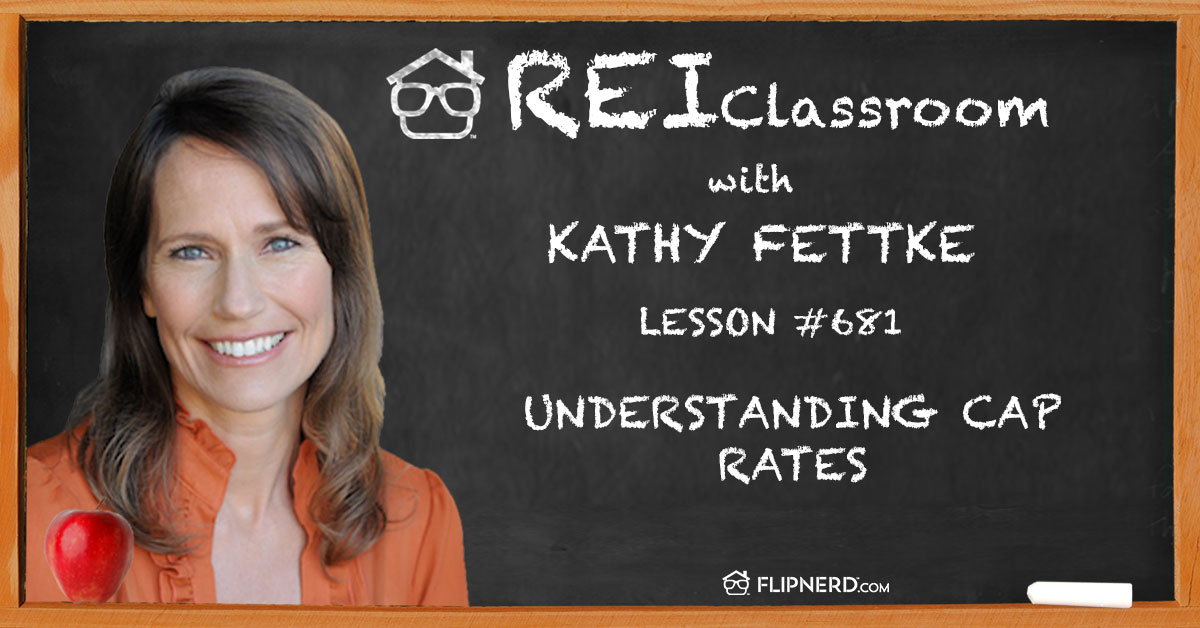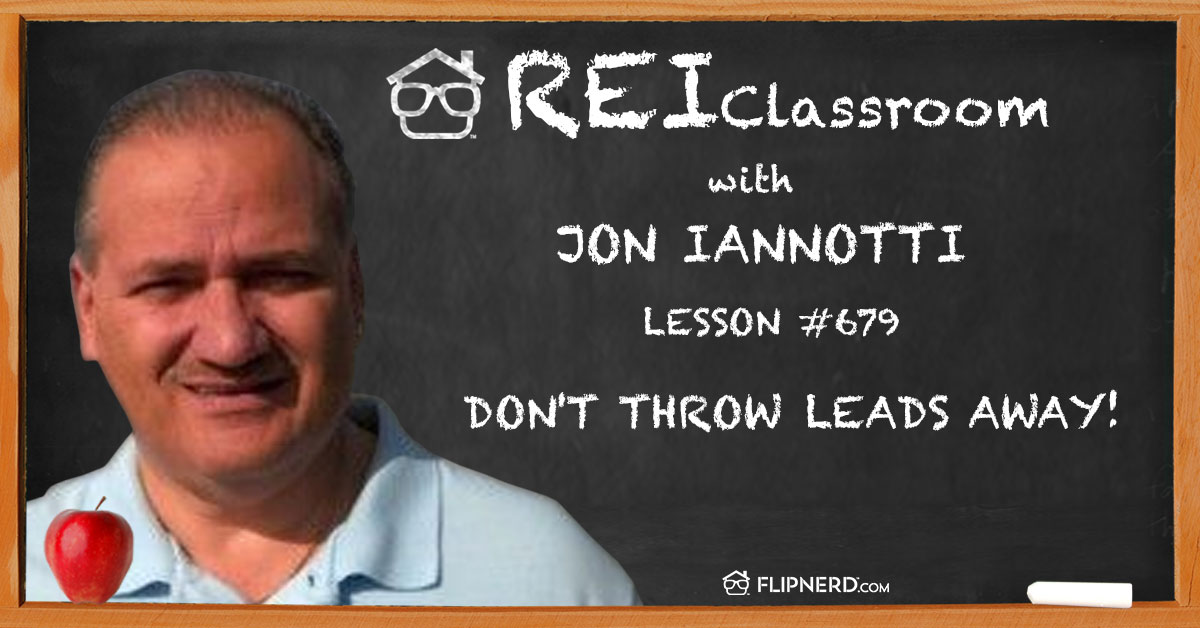Today’s REI Classroom Lesson
Blake Yarborough talks to us today about how to find good comps on a property so you can determine what it’s worth.
REI Classroom Summary
You should strive to use comps that are the most “like” your property. Square footage, location, layout, year built, finish out, etc. are all factors you should consider when finding comps.
Listen to this REI Classroom Lesson
Real Estate Investing Classroom Show Transcripts:
Mike: Welcome back to the flipnerd.com REI Classroom, where experts from across the real estate investing industry teach you quick lessons to take your business to the next level. And now, let’s meet today’s expert host.
Blake: Hello, this is Blake Yarborough with this week’s episode of flipnerd.com. Today I want to talk about “What’s my house worth?”
Mike: This show is sponsored by passiverental.com.
Blake: People has this problem all the time running comps and probably 80, 90% of the comps are real easy to find but, we all buy properties in certain areas that there’s just not a lot of comps. Most people are . . . most realtors have the ability to pull off MLS, that’s Multiple Listing Service. There were other services out there like Red Bell, okay? You don’t have to be a realtor to be a member of that and you have search criteria that could limit your search.
A little bit different means where they get their data, I’ll let them worry about those details. But in short, between either one of these services, you can do some basic criteria of narrowing your search.
First things first, you want to have like-kind properties. You want to compare properties typically in the same subdivision, the same style, design and appeal, one-story versus two-stories. I see people making errors all the time. They compare against houses that have granite and nice flooring to stuff that has linoleum and cheap flooring. So make sure your finishings and your upgrades are similar.
And don’t forget the age bracket. Let’s say you got a 1982 house, well, don’t compare it to a 2010 house. Okay? There’s got to be some adjustment there. Let’s go ahead and working backwards of your age bracketing. Try to have within, say 10 years on either side, that ought to give you a good sample. So, a 1982 house you might take them from ’72 to ’92. Say if it’s a 1,500 square foot house, try to go 10 to 20% on either side, so you might go 1,200 to 1,800. If you still have too many comps, narrow it down to 10% on either side.
If it’s a three bedroom and two baths, try to state three bedroom, two baths. If it’s a three bedroom, one bath, you can still have the two baths but there’s going to have to be maybe an adjustment, it depends on the value of the home, but it maybe $5,000 for that extra bath. If it has extra buildings, you need to take that into account.
The design and appeal. Now with that, I’m talking about curb appeal. I mean it’s the same basic style or structure. Over the years, people have built some strange houses, very customized. Try to find other houses similar to the one you’re buying and keep those in your little pool of comps.
Now when you’ve got a series of comps, what I personally like to do is throw out the high comp, whatever it is and look at the next three. I put granite in most of my properties, so I’m looking at the properties that have finishings of granite and nice flooring. And if so, you throw out the high comp, look at the next three, come up with the estimate ballpark value there.
Also, when you’re making these adjustments, you don’t typically . . . if you ever look at an appraisal, an appraisal will never adjust for square footage, 100% cost per square foot similar to the sales price itself of the houses. See, because every house there, there’s a certain . . . before the house was built, there’s a certain amount of value in the land, the utilities, the driveway, etc.
A 100 square foot house that sell for $100,000, could sell for $1,000 square foot. A thousand square foot house would sell for $100 square foot. You can’t make that same adjustment all the way. So a smaller house will always sell a higher cost per square foot than a larger house.
Now, coming back to our comps, I want you to be conservative when you’re buying a house, but be aggressive when you’re selling it, provided the market dictates that. So you know that high comps you threw it out early on when you were buying it or using it for a good value? You might really pay attention to that now when you’re putting the house back on the market if you did a good job on it.
But anyway, these are a couple little tips I had that I want to talk about standard neighborhoods with a lot of comparables.
Now, there’s other times to buy a house, I see this all the time in duplexes or four-plexes. But sometimes you buy in these little pocket neighborhoods that don’t have a lot of comps, a lot of turnovers, a lot of sales. So what you could do is instead of just having the subdivision or if it’s an area, like some of the areas I know around here in Houston that have a lot of small subdivisions in a general area, what you could do is then start pulling up to key map page and grid. That will be at three-mile by five-mile radius. And hopefully, that gives you a bunch of comps and then you can narrow it down from there by age, square footage, etc.
And hopefully, that’ll help you go that . . . that’s the whole key map page, I’m sorry about that. Key map page and grid would be a, I think it’s three-quarters of a mile by one mile. But you can also run to having it on the edge of one of those key map page and grids, so you might get the other key map pages. It’s just, when you get in those situations with the hard to find comps, you just got to roll up your sleeves and it’s going to be a little bit more work but that’s what you’re going to need to do to get accurate data.
Hopefully, this helps. Hopefully, it wasn’t too confusing. This is Blake Yarborough with Capital Concepts, signing off from flipnerd.com. Thank you very much.
Mike: Passiverental.com is your source for turnkey, done for you rental properties. If you’d like to be an investor and not a landlord, please visit passiverental.com to learn how to purchase cash flowing, professionally managed rental properties in the hottest rental markets across the country. We can also help connect you with financing for your next property. Invest the easy way today and get started by visiting passiverental.com.
Please note, the views and opinions expressed by the individuals in this program do not necessarily reflect those of flipnerd.com or any of its partners, advertisers, or affiliates. Please consult professionals before making any investment or tax decision as real estate investing can be risky.
Are you a member yet of flipnerd.com, the hottest real estate investing social community online? If not, you can join for free in less than 30 seconds and get access to hundreds of off-market deals, vendors in your market to help you in your business, and you can start networking with thousands of other investors just like you. Get your free account now at flipnerd.com.
Please check out the FlipNerd family of real estate investing shows where you can access hundreds of expert interviews, quick tips, and lessons from leaders across the real estate investing industry. They’re available at flipnerd.com/shows or simply search for FlipNerd in the iTunes store.
Blake: Hello, this is Blake Yarborough with this week’s episode of flipnerd.com. Today I want to talk about “What’s my house worth?”
Mike: This show is sponsored by passiverental.com.
Blake: People has this problem all the time running comps and probably 80, 90% of the comps are real easy to find but, we all buy properties in certain areas that there’s just not a lot of comps. Most people are . . . most realtors have the ability to pull off MLS, that’s Multiple Listing Service. There were other services out there like Red Bell, okay? You don’t have to be a realtor to be a member of that and you have search criteria that could limit your search.
A little bit different means where they get their data, I’ll let them worry about those details. But in short, between either one of these services, you can do some basic criteria of narrowing your search.
First things first, you want to have like-kind properties. You want to compare properties typically in the same subdivision, the same style, design and appeal, one-story versus two-stories. I see people making errors all the time. They compare against houses that have granite and nice flooring to stuff that has linoleum and cheap flooring. So make sure your finishings and your upgrades are similar.
And don’t forget the age bracket. Let’s say you got a 1982 house, well, don’t compare it to a 2010 house. Okay? There’s got to be some adjustment there. Let’s go ahead and working backwards of your age bracketing. Try to have within, say 10 years on either side, that ought to give you a good sample. So, a 1982 house you might take them from ’72 to ’92. Say if it’s a 1,500 square foot house, try to go 10 to 20% on either side, so you might go 1,200 to 1,800. If you still have too many comps, narrow it down to 10% on either side.
If it’s a three bedroom and two baths, try to state three bedroom, two baths. If it’s a three bedroom, one bath, you can still have the two baths but there’s going to have to be maybe an adjustment, it depends on the value of the home, but it maybe $5,000 for that extra bath. If it has extra buildings, you need to take that into account.
The design and appeal. Now with that, I’m talking about curb appeal. I mean it’s the same basic style or structure. Over the years, people have built some strange houses, very customized. Try to find other houses similar to the one you’re buying and keep those in your little pool of comps.
Now when you’ve got a series of comps, what I personally like to do is throw out the high comp, whatever it is and look at the next three. I put granite in most of my properties, so I’m looking at the properties that have finishings of granite and nice flooring. And if so, you throw out the high comp, look at the next three, come up with the estimate ballpark value there.
Also, when you’re making these adjustments, you don’t typically . . . if you ever look at an appraisal, an appraisal will never adjust for square footage, 100% cost per square foot similar to the sales price itself of the houses. See, because every house there, there’s a certain . . . before the house was built, there’s a certain amount of value in the land, the utilities, the driveway, etc.
A 100 square foot house that sell for $100,000, could sell for $1,000 square foot. A thousand square foot house would sell for $100 square foot. You can’t make that same adjustment all the way. So a smaller house will always sell a higher cost per square foot than a larger house.
Now, coming back to our comps, I want you to be conservative when you’re buying a house, but be aggressive when you’re selling it, provided the market dictates that. So you know that high comps you threw it out early on when you were buying it or using it for a good value? You might really pay attention to that now when you’re putting the house back on the market if you did a good job on it.
But anyway, these are a couple little tips I had that I want to talk about standard neighborhoods with a lot of comparables.
Now, there’s other times to buy a house, I see this all the time in duplexes or four-plexes. But sometimes you buy in these little pocket neighborhoods that don’t have a lot of comps, a lot of turnovers, a lot of sales. So what you could do is instead of just having the subdivision or if it’s an area, like some of the areas I know around here in Houston that have a lot of small subdivisions in a general area, what you could do is then start pulling up to key map page and grid. That will be at three-mile by five-mile radius. And hopefully, that gives you a bunch of comps and then you can narrow it down from there by age, square footage, etc.
And hopefully, that’ll help you go that . . . that’s the whole key map page, I’m sorry about that. Key map page and grid would be a, I think it’s three-quarters of a mile by one mile. But you can also run to having it on the edge of one of those key map page and grids, so you might get the other key map pages. It’s just, when you get in those situations with the hard to find comps, you just got to roll up your sleeves and it’s going to be a little bit more work but that’s what you’re going to need to do to get accurate data.
Hopefully, this helps. Hopefully, it wasn’t too confusing. This is Blake Yarborough with Capital Concepts, signing off from flipnerd.com. Thank you very much.
Mike: Passiverental.com is your source for turnkey, done for you rental properties. If you’d like to be an investor and not a landlord, please visit passiverental.com to learn how to purchase cash flowing, professionally managed rental properties in the hottest rental markets across the country. We can also help connect you with financing for your next property. Invest the easy way today and get started by visiting passiverental.com.
Please note, the views and opinions expressed by the individuals in this program do not necessarily reflect those of flipnerd.com or any of its partners, advertisers, or affiliates. Please consult professionals before making any investment or tax decision as real estate investing can be risky.
Are you a member yet of flipnerd.com, the hottest real estate investing social community online? If not, you can join for free in less than 30 seconds and get access to hundreds of off-market deals, vendors in your market to help you in your business, and you can start networking with thousands of other investors just like you. Get your free account now at flipnerd.com.
Please check out the FlipNerd family of real estate investing shows where you can access hundreds of expert interviews, quick tips, and lessons from leaders across the real estate investing industry. They’re available at flipnerd.com/shows or simply search for FlipNerd in the iTunes store.










